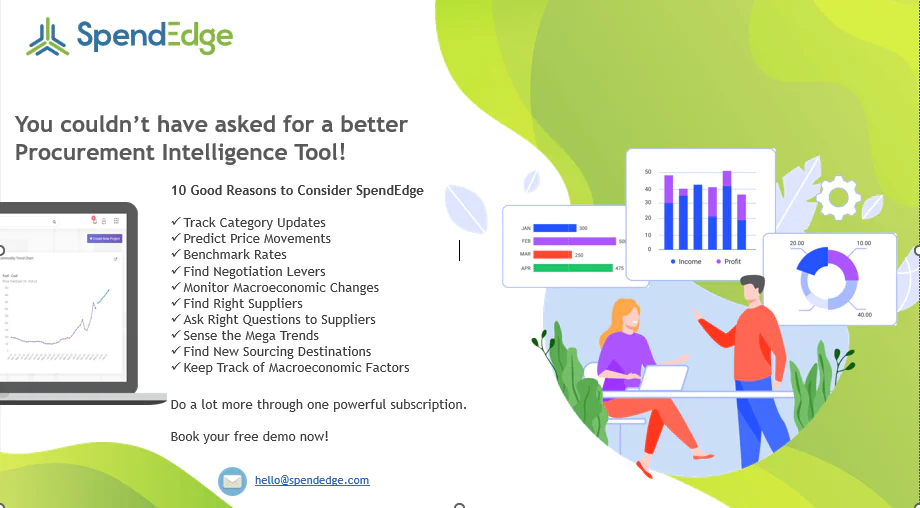The principle of transparency refers to the availability of information about a company. This information must be clear, precise, accurate, and understandable to everyone. The transfer of data occurs both within the company, such as when sharing the company’s global strategy with employees, and externally, such as through the disclosure of product composition. While this principle applies to many services, it has become increasingly important in procurement. The supply division is responsible for selecting raw materials for the company’s production. Its role is to help create the best possible product while keeping costs under control and meeting delivery requirements.
Transparency in procurement is vital for fostering trust, minimizing risks, and ensuring ethical practices. By openly communicating processes, costs, and decisions, organizations build credibility with stakeholders, including suppliers and the public. Transparent procurement practices enhance competition, as suppliers understand selection criteria. This openness also mitigates corruption risks and ensures compliance with regulations. Ultimately, transparency in procurement facilitates accountability, efficiency, and the establishment of robust relationships, contributing to better decision-making and overall organizational success.
How can transparency be beneficial to the procurement process?

Abstain from duplication of orders and errors:
These issues could potentially cost you money and time, as jobs may be delayed and incorrect pricing can lead to disputes, resulting in potential loss of bids. To prevent these issues, implement checks and balances with a built-in supervisory review and approval system for significant orders. By avoiding duplicate orders, organizations prevent unnecessary expenditures and reduce the risk of overstocking. Eliminating errors in procurement processes enhances accuracy, saves time, and maintains the integrity of supply chain operations, contributing to streamlined workflows and improved overall procurement performance.
Reduction in the number of illegal and fraudulent activities:
Dishonest employees can place fraudulent orders and work together with suppliers to receive kickbacks, especially when there’s no visibility into the ordering activity. To mitigate this risk, it’s important to have a formal and consistent approval process that provides transparency into this activity. Additionally, it’s recommended to keep detailed records of orders in a readily accessible location. Implementing stringent controls, thorough due diligence in supplier selection, and regular audits can help identify and prevent fraudulent practices.
Easy auditing possibility:
It is important to carry out audits of your procurement activities at least once every three months, and the audits should be conducted by a third party. The IRS may also conduct an audit, so it is crucial to keep accurate and comprehensive records of all transactions to comply with regulations and streamline the auditing process. Transparent procurement practices reduce the likelihood of fraudulent activities and errors, making it easier for auditors to identify discrepancies, assess risk, and validate the accuracy of financial records.
Increase in cost reduction opportunities:
It’s important to understand your spending before going to market with bids. This is because suppliers are aware of your spending and without this knowledge, you won’t be able to determine how much you’ll save with bidding. By understanding your spending, you may also be able to leverage bulk purchasing. Additionally, having accurate and complete information will enable you to track supplier pricing. Additionally, clear visibility into procurement operations helps uncover redundancies and inefficiencies, allowing for targeted improvements.
Transparency builds credibility:
Transparency builds credibility in procurement by fostering trust and accountability. When organizations openly share information about their procurement processes, decisions, and outcomes, stakeholders gain confidence in the fairness and integrity of the operations. Transparent practices, such as clear communication of procurement strategies and adherence to ethical standards, demonstrate an organization’s commitment to honesty and openness.
How can organizations achieve transparency in procurement?
Market engagement:
Engaging with the market early on in the procurement process can be highly beneficial. It allows you to test out your proposed procurement strategies before committing to them, which can help maximize the potential for success, build confidence, and reduce the risk of non-engagement. It also helps to increase the market’s awareness of upcoming work opportunities, allowing them to manage their resources accordingly and validate the feasibility of delivering the proposed outcomes.
The procurement package should be to the point:
Prospective bidders should be provided with a clear and concise procurement package. This package should outline the entire tender process, including a comprehensive timeline. Only necessary details relevant to the procurement process should be included, such as project specifications, requirements, and terms and conditions. By avoiding unnecessary complexities or excessive documentation, the procurement package becomes more focused, enabling efficient evaluation and decision-making by all stakeholders involved.
Clear communication:
It is important to maintain clear and concise communication by using only one official channel and keeping a record of all communication. This will help ensure that all parties are aware of who communicated what, to whom, and when to avoid any confusion later on. Proper status management is crucial to ensure that on the day the client opens bids for a specific package, all submissions are complete, and nothing is missing.
Informed business decisions:
Using standardized questions and an agreed format for submitting responses can encourage bidders to provide bids that are easy to review and score. However, some suppliers may be tempted to include more information than necessary, which can result in additional marketing content that doesn’t address their suitability for the project. This can create extra work for both the supplier and the evaluation team. To prevent this, the response requirements for suppliers should be identified in some cases, restricted to only the information that is relevant to the question asked.





